Blog
“Time to ship off again!” – Mikaela Shiffrin gets real after ending training camp in Argentina, striving for Winter Olympics goals
Mikaela Shiffrin is the most decorated skier to ever take to the slopes. The American has had a fantastic skiing career, and as she prepares for yet another record-breaking season, she just gave fans a sneak peek into her training camp in Argentina.
Shiffrin first became famous in 2013, when she won her first World Cup race at the age of 17. Since then, she has finished on 157 World Cup podiums and won 100 races. She has also won 11 discipline and five overall titles.
Mikaela Shiffrin revealed her preparations for the 2025-2026 FIS alpine skiing season and the Winter Olympics. On Instagram, she uploaded photos from her training camp in Argentina and got candid, stating,
“The training camp was a blast. It’s time to ship off again.
The 2025-2026 FIS Alpine Skiing World Cup season will begin in late October with Giant Slalom races at Soelden, Austria. Meanwhile, the 2026 Milano-Cortina Winter Olympics are set to take place from February 6 to 22.
Mikaela Shiffrin discusses her motivation to continue skiing.
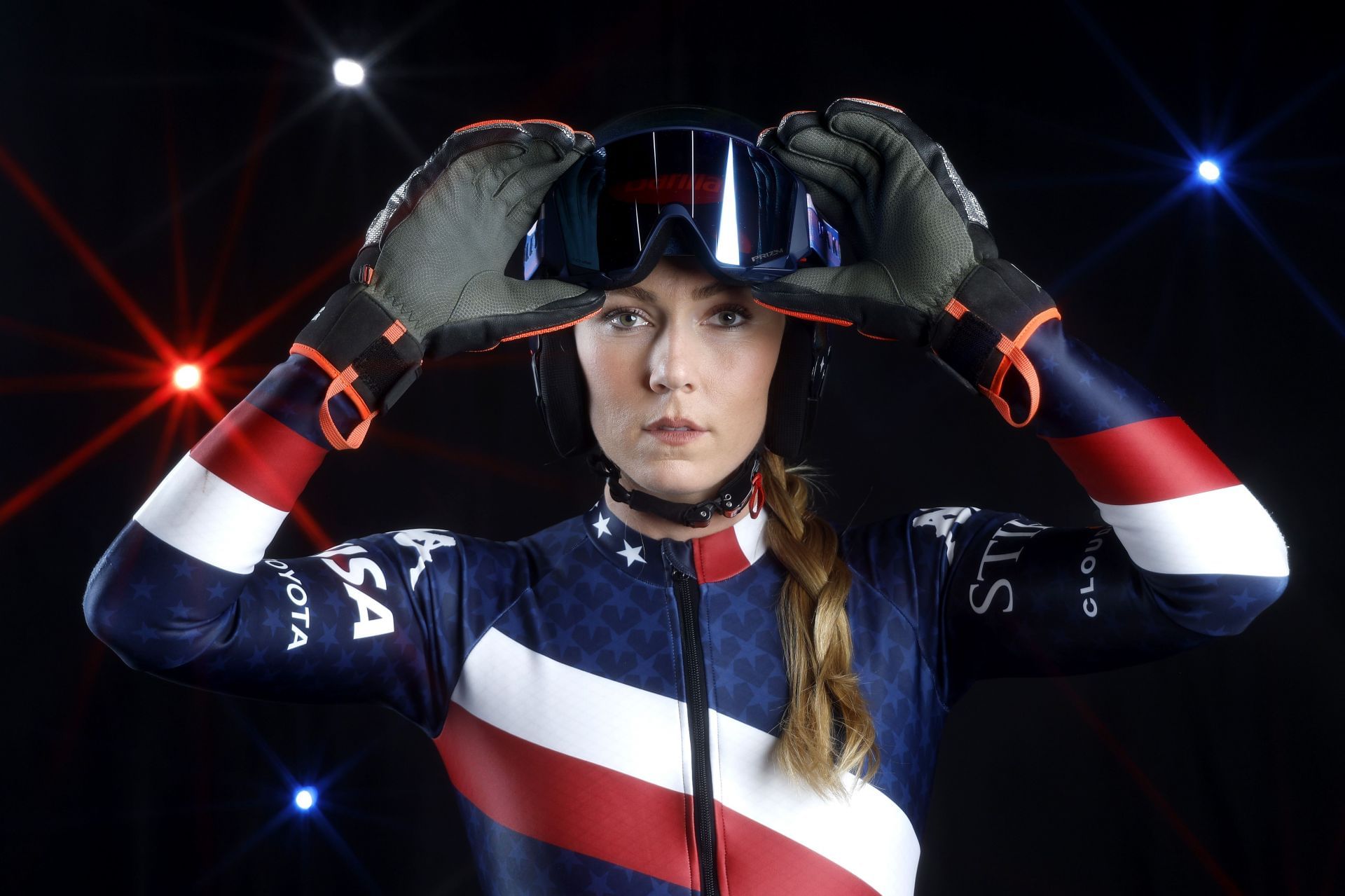 Shiffrin at a Team USA Photo Shoot (Image Source: Getty
Shiffrin at a Team USA Photo Shoot (Image Source: Getty
Mikaela Shiffrin is unquestionably one of the best skiers of all time. In a recent interview with Self Magazine, Shiffrin reflected on her initial objective as a ski racer, saying,
“When I was little, I used to watch Bodhi Miller ski; he was my inspiration. Of course, I watched all of the sport’s greats, including Marlies Schild, Marcel Hirscher, Hermann Maier, and Lindsay Vonn. It would occur to me: “They’re the best, so I want to be the best.” I wasn’t sure what qualified for that, but the most obvious accomplishments were season titles, race wins, the overall globe, and so on.”
She went on to say that the same aim still motivates her now, stating,
“That objective has motivated me. It’s been broad enough that when I reach 50, 87, or even 99 and 100, folks wonder why I’m so motivated. The answer is that I still have the potential to be one of the world’s finest ski racers, and as long as I have that talent, I’m willing to attempt. It’s difficult, but it’s a challenge I want to take on.”
Aside from her accomplishments on the FIS World Cup circuit, Mikaela Shiffrin is an eight-time world champion. Meanwhile, during her Olympic career, the American has won two gold medals and one silver.
Riddhi Acharya
Riddhi is a Sportskeeda journalist who specialises in Indian and US Olympic sports coverage. Growing up, sports were an important part of her life, from cheering on her favourite teams to anticipating significant events. She has much experience covering the sport and demonstrates a thorough understanding of the game and its participants. Riddhi excels at writing engaging pieces, conducting thorough research, and staying current on the latest news and trends, all while adhering to SEO and journalism guidelines.
Aleksander Aamodt Kilde Explains Why He and Mikaela Shiffrin Choose to Be “Open” About Their Relationship

Skifahrer Aleksander Aamodt Kilde mit Lebensgefaehrtin Mikaela Shiffrin, Rennen, Grosser Preis von Monaco, Motorsport, Herren, Formel 1, 26.05.2024 Monte Carlo Monaco MCO *** Skier Aleksander Aamodt Kilde with partner Mikaela Shiffrin, Race, Monaco Grand Prix, Motorsport, Men, Formula 1, 26 05 2024 Monte Carlo Monaco MCO Copyright: xkolbert-press/ChristianxKolbertx
When two of the most successful alpine skiers in the world fall in love, it’s bound to attract attention. But for Norway’s Aleksander Aamodt Kilde and America’s Mikaela Shiffrin, that attention has become more than just tabloid fodder — it’s an opportunity to show what healthy, supportive partnership can look like in the high-pressure world of professional sport.
In a recent interview, Kilde shared why he and Shiffrin have chosen to be open about their relationship, despite the public scrutiny that comes with it. “We decided early on that we wouldn’t hide it,” he explained. “We are both public people, and our lives are already very visible. Being open doesn’t mean we share everything — it just means we choose honesty over secrecy. It’s who we are.”
For the couple, who have been together since 2020, openness has become an extension of the authenticity they both value — not a publicity strategy, but a reflection of how they live their lives. “We are not trying to put on a show,” Kilde said. “We are just being ourselves. That’s all there is to it.”
A Relationship Built on Mutual Respect
Mikaela Shiffrin, the most decorated alpine skier in history with over 90 World Cup wins, and Aleksander Aamodt Kilde, Norway’s reigning downhill powerhouse, first crossed paths as teenagers competing on the junior circuit. For years, they were just friends — friendly rivals from different countries whose careers often intersected on the same snow-covered peaks.
Their friendship evolved into romance during the global lockdown of 2020. “It was a strange time,” Kilde recalled. “We weren’t competing, everything had slowed down, and for the first time in years, there was space to just talk — about skiing, yes, but also about who we are away from the sport.”
That connection deepened, and by late 2020, the couple went public with their relationship through social media. Fans quickly embraced the pairing, captivated by their shared humor, mutual admiration, and unfiltered approach to love and life.
Shiffrin later said their decision to go public wasn’t calculated. “It just felt natural,” she explained. “We weren’t trying to make a statement. We just didn’t want to pretend to be strangers when we clearly weren’t. It’s not about posting for attention — it’s about being honest.”
Openness as a Form of Balance
In the high-stakes world of professional skiing, privacy can be hard to maintain. Training camps, media obligations, and constant travel make relationships difficult even under the best of circumstances. For Kilde, being open about his relationship with Shiffrin actually helps reduce that pressure rather than add to it.
“When people know, you don’t have to hide,” he said. “You don’t have to make excuses or avoid questions. It takes away the stress of secrecy and allows you to just focus on what really matters — your sport and your relationship.”
He added that being open doesn’t mean sharing everything. “There’s a line. We keep our private moments private. But we’re not afraid to show affection or to support each other publicly. I think that’s healthy — not just for us, but for others to see that you can have love and career together.”
That kind of visibility, according to sports psychologist Dr. Linnea Fossheim, can have a positive effect on younger athletes. “When fans and young competitors see two world-class athletes respecting each other’s space, success, and vulnerability, it normalizes emotional openness in sports,” she explained. “That’s powerful in an environment that often values toughness over tenderness.”
Supporting Each Other Through Highs and Lows
Both Shiffrin and Kilde have faced personal and professional challenges that have tested their resilience — and their relationship. Shiffrin suffered a devastating loss in 2020 when her father, Jeff Shiffrin, died suddenly. She took a break from competition and later spoke about how that period reshaped her perspective.
Kilde, meanwhile, faced his own hardship when he tore his ACL in January 2021, forcing him to miss the remainder of that season. Through those trials, they found strength in each other.
“She was there for me when I couldn’t even walk,” Kilde said in an earlier interview. “When you go through something like that, you see what kind of person your partner really is.”
Shiffrin has echoed similar sentiments. “We both know what it’s like to fail, to get hurt, to doubt ourselves,” she said. “That understanding makes it easier to be patient with each other. We don’t always have to explain — we just get it.”
That emotional connection, Kilde believes, is why being open about their relationship feels right. “It’s real,” he said simply. “It’s not a perfect story, but it’s ours.”
Social Media and the Modern Athlete
Of course, being open in today’s digital age comes with challenges. The couple’s social media posts — whether a funny training video or a photo from a ski trip — often go viral, attracting both adoration and criticism.
“People will always have opinions,” Kilde admitted. “Some think we share too much, some think we’re hiding something. But we can’t live for what people expect. We just live for what feels true.”
He also pointed out that social media, when used thoughtfully, can be a way to connect with fans on a deeper level. “It’s not about promoting ourselves — it’s about showing that we’re human. We have good days and bad days like everyone else.”
Sports journalist Hannah Müller, who has covered both athletes for several years, believes that their openness has helped redefine what a sports couple can represent. “They’re not selling a fairy tale,” she said. “They’re showing that relationships require communication, vulnerability, and respect — even in a world driven by competition.”
Looking Ahead
With another World Cup season approaching, Shiffrin and Kilde are once again preparing to compete — often in different countries, sometimes only seeing each other for brief moments between races. Yet both say that distance has never been an obstacle.
“We’ve learned how to handle time apart,” Shiffrin said. “When we’re together, we make it count. When we’re not, we cheer for each other from afar. It’s simple, but it works.”
For Kilde, that simplicity is key. “Our relationship doesn’t need to be complicated,” he said. “We both love what we do, and we both love each other. The rest, we figure out as we go.”
As the skiing world watches them continue to carve their respective paths, their openness remains both their signature and their strength — a quiet reminder that authenticity, even in the glare of fame, can still thrive.
In the end, Aleksander Aamodt Kilde’s explanation of why he and Mikaela Shiffrin choose openness comes down to something refreshingly human: “We’re proud of what we have. Why would we hide something that makes us happy?”
For two athletes accustomed to chasing perfection, it’s a sentiment as rare as it is relatable — a reminder that even in the world’s most competitive arenas, honesty and love can be the truest victories of all.
Today marks Mikaela Shiffrin’s comeback to the World Cup circuit. What you should know
Mikaela Shiffrin is having a great start to her comeback to the World Cup circuit.
Thursday’s opening run of a slalom race in Courchevel, France, left the all-time leader in World Cup victories in fifth place, less than nine weeks after a mishap in Killington, Vermont, left her with a major gash in her oblique muscles. Zrinka Ljutic of Croatia was 0.87 seconds ahead of Shiffrin, but she was only 0.19 seconds behind third place.
Later on Thursday afternoon is the second run.
“It’s just nice to be racing,” Shiffrin remarked prior to the initial pit stop.
It is improbable that Shiffrin will surpass her 100th World Cup victory. However, Shiffrin warned that she is still not fully recovered and will continue to struggle with “remnants” of the injury for the remainder of the season when she made her comeback announcement last week.season.
It’s not painful, though. My muscles are functioning once again. I’ve been successful in rebuilding my strength. In an interview with the TODAY show, Shiffrin stated, “Physically, I’m in a really good place.” However, since Killington, I haven’t actually gone skiing. I’m attempting to compete on an equal footing with the world’s top athletes, including the World Cup competitors. I’m returning from tearing my oblique in half, and they’ve been skiing and are in absolute form.”
In the first run, Shiffrin struggled to regulate her body position and repeatedly got off her line, demonstrating the rust. However, the world’s top slalom skier was visible when she recorded the third-fastest time in the course’s third stage. She will undoubtedly be cleaner on her second run.
What you need know about Shiffrin’s comeback is as follows:
Mikaela Shiffrin will be racing again when?
In a slalom competition held in Courchevel, France, under the lights on Thursday, Shiffrin made his comeback to the World Cup circuit.
Slalom races have two runs, with the second one starting at 2:00 PM Eastern time (8 PM in France). Shiffrin will start last because the second run’s start order is the opposite of the first run’s outcomes. Make sure the stream is live by 2:30 p.m. to ensure you see her.
How am I able to watch?
In the US, skiandsnowboard.live will webcast the race live.
This season, how has Shiffrin performed?
Fantastic! Prior to her being impaled.
The season’s first two slalom events were won by Shiffrin. The second victory extended her record to her 99th World Cup victory and put her in the running for the slalom and overall titles.
However, her absence of nearly nine weeks has caused her to fall back in the rankings. She now sits ninth in the slalom rankings and 18th overall.
At Home With the Shiffrins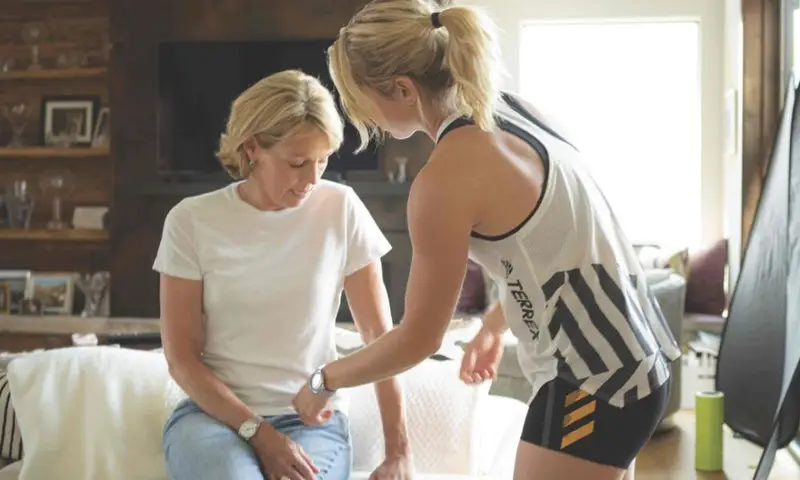
Mikaela’s mother reflects on the things she learnt while raising the greatest ski racer of all time.
Just before 4 p.m. on an August afternoon in Edwards, Eileen Shiffrin is seated in her living room, immersed in detailing the painstaking process of raising the world’s best ski racer—when, unexpectedly, the world’s best ski racer bursts through the door. “Mikaela, come say hello! ” She rants at her 26-year-old daughter, who lives with her. Mikaela says a quick hello as she scurries inside, apologising for having to leave again because a friend and neighbour (LEKI rep Charlie Webb) is trying to custom fit her shin guards in preparation for the coming winter. Mikaela is still over three months away from her first World Cup race and six months from the 2022 Olympic Winter Games in Beijing, but she is already feeling the crush—and rush—of expectations. Mom gives a knowing look before returning to her story.
Eileen has told several of these stories several times previously. Others, she is still unsure how to tell. This will be her second season as a single mom after her 34-year-old husband, Jeff, a Vail Health anaesthesiologist, died unexpectedly in February 2020. She enjoys reflecting on how she and Jeff raised Mikaela and her brother, Taylor, who is two and a half years older. Mikaela’s success as an Olympic champion was not unintended, but it was also not their goal.
“We just had so much fun skiing with them,” she explains simply. “However, others are constantly attempting to model their programs after how we achieved it. Stop right there! Parents should relax and enjoy the process when their children are young, regardless of the sport.”

Eileen Shiffrin at home in Edwards
Image: Brent Bingham
Jeff’s moustachioed countenance, which has been missing for more than a year, is reflected in framed images found in nearly every room of the exquisitely furnished, five-bedroom mountain modern home the Shiffrins built to replace their long-time family compound in nearby Eagle-Vail, where Mikaela and Taylor were raised. Eileen is proud that Mikaela created the bronze fireplace, and that several of her crystal globes are on exhibit downstairs, lighted and placed on a stacked-stone-wall trophy case. The three of them moved in during the summer of 2019, eight months before Jeff passed away. Eileen says adjusting to Jeff’s loss “was like getting a torpedo in the head and gut, over and over, for months on end.” They don’t often talk about the anguish they felt—and still experience. “We immediately realised that everyone has their own crosses to carry, and they are not the burdens of others; they are our own. “You learn to suffer in silence,” she admits.
Despite their pain and the way it has impacted their lives, the Olympics call. For Mikaela, the Beijing Games are her third and possibly best chance to maximise her talent on the sport’s most illustrious stage—which would entail winning multiple gold medals after winning one in each of her previous two Games. Shiffrin, who is likely to participate in up to five disciplines, all of which she has previously won on the World Cup, will once again be the face of the US delegation. Eileen, who has been by her daughter’s side on the slopes since Mikaela was in kindergarten, will play the same role as before, but Jeff will not. Win or lose, this usually secluded family will embark on a pivotal journey in front of the world’s eyes.

Three weeks before her father died, Mikaela Shiffrin was on pace to win her fourth straight World Cup overall title at the Audi FIS Alpine Ski World Cup in Flachau, Austria, on January 14, 2020.
Image: Max Hall/U.S. Ski Team
To comprehend the hole left by Jeff’s death—the result of a head injury experienced in a fall—and why his absence had such a significant impact on his daughter’s ski racing career, consider the beginning of Team Shiffrin. In the summer of 1985, Jeff and Eileen worked at St. Elizabeth’s Medical Centre in Brighton, Massachusetts. He, a 31-year-old rising-star physician, was completing his cardiothoracic rotation; she, a 25-year-old ICU nurse, described him as “brilliant, jovial, and curious, with a solution to every problem.”
Eileen had skiing in her blood. Every autumn, her parents brought her and her three siblings up to Mt. Greylock, a pasture with two rope tows. They used sickles to clear the meadow grass and prepare the slope for snowfall. Eileen skied with secondhand gear and wore jeans, leather boots, and a black trash bag when it rained. She planned to race in college, but gave it up when she started nursing school. Jeff, a former FIS racer from Dover, New Jersey, invited her on a date to Killington and persuaded her to give it another shot. They had their first vacation as a couple in Aspen, which is one of the reasons Eileen has always expressed “a fondness and nostalgia” for the place. “If it wasn’t for Jeff, I wouldn’t have kept skiing,” she says. “He brought back my love of the sport.”
They married in 1986 and relocated to Vail five years later, each working at the Vail Valley Medical Centre. Taylor was born in 1992, and Mikaela arrived in 1995. Jeff and Eileen taught their children to ski and schooled them on family outings to Vail for years before enrolling them in what was then Ski Club Vail at the age of 9 and 7.

The Shiffrin family at home in Vail in 1999.
Image: Courtesy Eileen Shiffrin
The Shiffrin children made significant development under the direction of SCV’s Rika Moore, who guided a curriculum devised by the club’s Deb Flanders. Mikaela learnt to clear slalom gates before most coaches would let their pupils try. Jeff’s profession and familial ties eventually led them back to New England, where the children settled at Burke Mountain Academy in Vermont’s Northeast Kingdom. Even after their family moved back to Vail in 2009, Mikaela returned to Burke, and Eileen accompanied her, homeschooling Mikaela in a leased condo and watching her training.
Mikaela was developing faster, and her parents worked hard to keep her grounded. They prevented her from studying the scoreboard following her victories, which included sweeping the famous Topolino races in Italy when she was 14. She was not permitted to celebrate. “It’s rude and inconsiderate,” they’d say, not to mention a waste of time. Jeff’s cardinal rule: “Be nice.” Think first. Mikaela had them put on a sticker and affixed to the back of her helmet after he passed away. Every day, he advised his children to “enjoy the process,” emphasising the process above the outcome. When Eileen and Jeff discussed skiing with Taylor and Mikaela, they formed their own language. “Knees to skis, take it deep,” they’d say. Or simply, “Swallow!” “—an SCV drill based on the bird’s wings tipping side to side during flight.”
Eileen was constantly monitoring their effort and performance. She wasn’t a whip cracker, but she knew what her children were capable of. If she felt they were falling short, she simply told them that it was always up to them to put in the effort necessary to realise their full potential. “That was all that was required,” says Taylor, who won two NCAA team championships with the University of Denver.

Mother and daughter time
Image: Brent Bingham
In March 2011, Mikaela’s first year in high school, the U.S. Ski Team selected a prize winner for a pair of World Cup tech events at Spindleruv Mlyn, Czech Republic. Eileen would soon become Mikaela’s full-time travel companion, but Jeff joined her on this trip and handled every detail. She finished 32nd in slalom, almost missing a second run.
The trip demonstrated what it takes to compete at the highest level, but they also shared beautiful moments as father and daughter, wandering through Prague and analysing video together. “I can’t imagine what it would have been like if he wasn’t there,” Mikaela tells me.
Mikaela went on to win the US national slalom title that spring, at the age of 16, and qualified for a full season on the World Cup. A few months later, she and her parents sat on their couch in Eagle-Vail, discussing how it might work. Mikaela and Eileen had already been studying video together every day, whether by phone or in person, and they were basically best friends. Given his responsibilities as a physician and associate professor at the University of Colorado, Jeff knew the only logical plan for their family was for Eileen to accompany Mikaela to Europe while he handled logistics from Vail, booking flights, lodging, and rental cars and removing distractions so they could focus on skiing. Mikaela began to call him “the Schedulizer.”
Eileen, who quit nursing after having Taylor, helped Mikaela with her schooling on the circuit. Jeff spent all of his PTO visiting them with Taylor, who raced on the NorAm Tour in addition to his time at DU. The family pondered moving to Europe to live together (Jeff even sought for work), but they loved Vail too much to leave.
People think we’re crazy because we’re so secretive, but our lifestyle is exhausting. So when we had the opportunity, we wanted to be together.
The highlight of their year was a two-month summer reunion. “We have always loved being together,” Eileen recalls from her living room. “We didn’t care if our children weren’t part of the group. We are the family that enjoys playing Rummikub. We do not feel obligated to go out on the town. We never felt the need to go downtown and show Mikaela off, especially since she’s [renowned]. People think we’re crazy because we’re so secretive, but our lifestyle is exhausting. So when we had the opportunity, we wanted to be together.”
As Mikaela’s career progressed and her World Cup victories piled up, the Shiffrins invited a small group of friends to join them for celebratory dinners at the conclusion of each winter. They’d toast a good season, safe return home, and enjoyment of the process. They never celebrated her individual achievements.

Team Shiffrin at the 2017 World Cup Finals in Aspen; after a second-place slalom finish, 22-year-old Mikaela became the youngest ski racer to win the overall World Cup title since 2003.
Image: Ryan Mooney/U.S. Ski & Snowboard
Parents rarely coach full-time for the World Cup, and when they do, fathers are more likely to maintain the position. (The mother of Slovenian racer Ilka Stuhec is the only mother who plays a role similar to Eileen’s.) During interviews, Eileen deflects credit, giving Mikaela’s two U.S. Mike Day and Jeff Lackie, the ski team coaches, work primarily with her. But those who know Eileen and understand the sport characterise her as a ski racing student in the same way that Billy Beane is a baseball student: fascinated with the obscure, always looking for the smallest advantage. She watches every racer in the field and has a keen sense of technique and speed, particularly what makes a ski racer fast. In the 1990s, she won two national titles as a masters racer and spent years competing in the local beer league, picking the brains of fellow enthusiasts on a daily basis. Though she keeps her basic coach’s licence from the United States. Eileen Shiffrin, of the Ski and Snowboard Association, is a natural sage rather than a professional examiner. This also applies to her function as motivator.
“I’ve always said Mikaela knows her body and herself better than anyone else, except maybe her mum,” adds Lackie, a former Canadian national team coach who specialises in speed disciplines. “Eileen does not coddle Mikaela, but she protects her. It sounds contradictory, yet it is not. Creating a sense of urgency and pushing her whenever she notices Mikaela becoming complacent is a distinguishing characteristic.”
Eileen does not coddle Mikaela, yet she protects her. It sounds contradictory, yet it is not. Creating a sense of urgency and pushing Mikaela anytime she detects complacency is a distinguishing feature.
“Mikaela needs Mom more than anyone,” says Taylor, 29, a data scientist and entrepreneur from Denver. “Why is it the case? Dad and I have several theories. We never talked much about it, but we knew Mom had to be there.
Despite Team Shiffrin’s success, Eileen always wanted to go back to nursing. So, in 2015, shortly after Mikaela turned 20, they decided to test a new system. Mikaela would “spread her wings and take off,” as Eileen puts it, while Eileen would retire from coaching to pursue her chosen job. Mikaela’s first World Cup race without her parents was at Åre, Sweden, in early December. Eileen sat down to watch from her mother’s house in Massachusetts at 4 a.m., when the SMS barrage started. Mikaela’s eyes were watering and hazy from an allergic reaction to poor cosmetics when she crashed while warming up in windblown snow, tearing her MCL. “I almost threw up when I found out,” Eileen admits, recoiling from the memories. Mikaela missed a significant portion of the season. She still believes she wouldn’t have crashed if her mother had been around to tell her to be cautious on the uneven terrain.
Eileen rejoined her daughter on tour once Mikaela returned to competition, and they decided to abandon the retirement plan. For the next four years, the technique delivered impressive results, including Mikaela’s breakout 2017 season, when she won her first overall title at the World Cup Finals in Aspen. Then in October 2019, Eileen’s mother, Mikaela’s “Nana” and biggest fan, passed away. Eileen and Jeff decided it might be time to try retirement again. Eileen leaned on Jeff while she mourned her loss at home. Mikaela’s skiing got worse across the Atlantic. She finished 17th in a race at Courchevel, France, in December, which was a shocking performance for the three-time defending overall World Cup winner.
Eileen returned to Europe, and Mikaela finished on the podium in seven of the next ten races, winning four. Her record came to an end on the notorious Bansko Speedway in Bulgaria in the last week of January 2020, with her father in attendance. “Bansko was the one place Jeff had always wanted to see Mikaela compete,” she adds.
Jeff saw his daughter win her first two speed races of the year, a downhill and a super-G, before finishing fourth in a second downhill. She was in good position to win her fourth consecutive overall title.
Following the Bansko races, Jeff spent a few days relaxing in Lake Garda, Italy, with Eileen and Mikaela. They had came to Lake Garda as a young family to windsurf 18 years ago, and Jeff and Eileen reminisced about their vacation while wandering around the lake. “We loved having him there,” Eileen recalls. When they said their goodbyes, they intended to see each other in five weeks.
Two days later, while training in Folgaria, Italy, Mikaela received a call from Taylor asking to speak with their mother, whom he had been unable to contact. Taylor informed Eileen that his father had collapsed and that she and Mikaela needed to return home immediately. They all got to be together again before Jeff died on February 2.

Mikaela Shiffrin training for the 2022 Winter Games with the U.S. Ski Team at Saas-Fee, Switzerland, in September
Image: Ryan Mooney/U.S. Ski & Snowboard
Mikaela returns home from her shinguard fitting just after 5 p.m. The Olympic winner sits on the couch, sipping orange seltzer and sporting red nail polish. She and her mother instantly begin recalling the chronological order of her early career. After a few minutes, Eileen rises from her chair and walks over to sit with her daughter on the couch. They’re both wearing white tank tops and share a striking resemblance—wavy blond hair, dazzling eyes, and movie-star smiles.
In a few weeks, the circus will relaunch in Saas-Fee, Switzerland, for training with the US. Ski Team, then home for Taylor’s September wedding at Piney Lake and a few preseason fundraisers, then to Austria for the season opener in early October, all leading up to China in February. The Olympics are a massive logistical question mark; according to information obtained by the Shiffrins from local coaches, there were only three days in February last year when alpine races could have been held due to high winds at the Olympic venue. This year, they plan to hold 11 races in two weeks.
Eileen frequently prepares her kid for a roller coaster ride, both literally and mentally. At the age when many of her friends are retiring, Eileen, 62, is as active as she has ever been. She’s still heartbroken. “We’re not over the grief,” she adds from the couch. “You don’t get over the grief,” she says, “but you get over a hump.”
“And you find a way to survive it,” Eileen explains. “Especially with a community like this. It helped a lot. People came out of the woodwork to offer, “Oh, your microwave is broken; don’t worry; we can help with that and this.”
Mikaela won two World Cup events and four medals at the World Championships last winter, including gold in combined, but her overall placing of third was disappointing for such a decorated champion. “She was finding her way back,” explains Day, who manages her technical program. “I think last year was survival to a certain extent.”
The last few years have reinforced my belief that I couldn’t finish my career without my mother’s presence.
Mikaela is now in better shape than she has ever been heading into a season. Taylor, who frequently visits Edwards, claims she buried him in the same test he used to bury her. This summer, she worked out alongside her boyfriend, Norway’s gigantic 2019 overall World Cup champion, Aleksander Aamodt Kilde. “It’s a significant change. “It doesn’t even feel like she’s the same athlete,” says Lackie, Shiffrin’s strength and conditioning coach. “But for sure, it took a full year before I could see the light return to her eyes.”
Someday, the Shiffrin women will retire from ski racing and focus on schussing for leisure, as they do every spring with a small group of friends in Aspen. Mikaela had considered going to medical school, like her father. Spending 220 days per year on the road takes its toll. But for the time being, there are still records to break and a goal that takes complete dedication—from both persons. “The last couple years have solidified even more that I can’t imagine finishing my career without my mum being there,” Mikaela reports. “I have physios, coaches, and plenty of people who literally bend over backwards to help, but they can’t replace what she does when she’s there. It’s impossible to explain everything she does.”
Eileen, sitting a foot away, interjects: “Let’s just suppose, theoretically—I’m not pushing this at all—in a couple years, my eyesight, memory, and joints deteriorate, but you’re still kicking butt. You could talk with the other girls about it.”
“I know,” Mikaela responds. “There is a possibility that it could work, but I don’t see any reason for us to investigate it. Because what is the point? We know what works, so there’s no reason not to keep continuing.
-
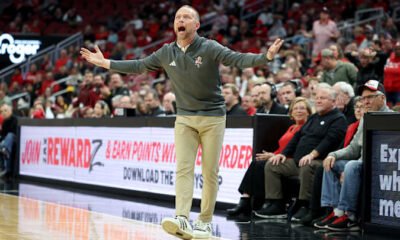
 Blog5 months ago
Blog5 months agoPat Kelsey sends a strong three-word fiery message to the Louisville basketball’s team after their Cardinals 14th win…
-

 Blog7 months ago
Blog7 months agoNetflix releases “The Underdog,” a much-anticipated documentary about Drew Brees. slated for publication on the 25th
-
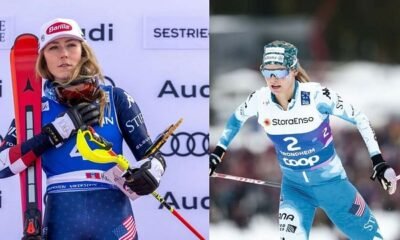
 Blog5 months ago
Blog5 months agoMikaela Shiffrin responds to cross-country skier Jessie Diggins’ letter following her failure to secure a solitary podium finish at the FIS Nordic Worlds
-

 Blog3 months ago
Blog3 months agoBehind the Turns: Netflix’s Upcoming Documentary on Mikaela Shiffrin’s Fights, Fears, and Love
-

 Blog4 months ago
Blog4 months agoLegacy Tour Led Zeppelin has officially confirmed their 2026 reunion tour, which will be their first extensive live performances since 2007. The “Led Zeppelin Legacy Tour 2026” will begin on June 10, 2026, at Los Angeles’ SoFi Stadium.
-
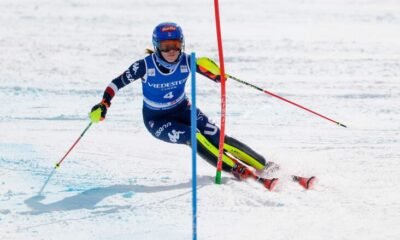
 Blog5 months ago
Blog5 months agoWomen’s Slalom Run 1 at the FIS Alpine Skiing World Cup: Are
-

 Blog5 months ago
Blog5 months ago“Courtside to Aisle-Side: Tyrese Haliburton and Jade Jones Set New Wedding Date”
-

 Blog7 months ago
Blog7 months agoFederica Brignone: “I’m fine, but my return to skiing is far off.”

